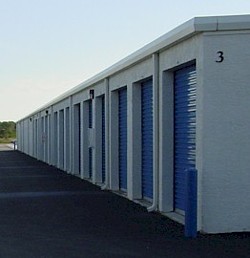 Throughout the struggles the U.S. economy has seen, the self storage industry has been one of the few markets to continue to prosper. While profits have been no where near their potential, self storage owners have yet to be hit as hard as other property owners. However, with some recent improvements in the lending industry, self storage should be looking to take another turn for the best. The FDIC is closing in on its list of failing banks, meaning those that are still standing are beginning to thrive. Another driving force is the status of self storage as “an acceptable property type and USDA lending programs for rural properties” by the Small Business Administration. For many owners, this can lead to refinancing for better interest rates.
Throughout the struggles the U.S. economy has seen, the self storage industry has been one of the few markets to continue to prosper. While profits have been no where near their potential, self storage owners have yet to be hit as hard as other property owners. However, with some recent improvements in the lending industry, self storage should be looking to take another turn for the best. The FDIC is closing in on its list of failing banks, meaning those that are still standing are beginning to thrive. Another driving force is the status of self storage as “an acceptable property type and USDA lending programs for rural properties” by the Small Business Administration. For many owners, this can lead to refinancing for better interest rates.
As of early 2012, according to an article in Inside Self Storing, “the one-, five-, and 10-year treasuries are at .1 percent, .86 percent, and 1.99 percent, respectively.” In comparison just five years ago, in early 2007, the rates were at 5 percent, 4.68 percent, and 4.68 percent (as found with an inverted yield curve). Where banks are competing, generally in metropolitan areas, fixed rates can sit lower than 4 percent. Other areas have used the rates for extremely low interest rates as well.
Other Lenders
But banks aren’t the only institutions getting back in into lending; life insurance companies are making a comeback as well. While most companies, of those who lend for self storage, will fund deals with a minimum of $5 million, there are smaller companies that will lend as little as $500,000. However, besides the lending minimums, there are also a few differences when borrowing from an insurance company. Closing time is generally 60 to 90 days, while about 2 percent of the loan is due on application, then refunded after closing. There are also some additional fees, including “$8,000 to $10,000 of third-party reports and another $5,000 to $20,000 in lender legal fees.” But in the long run, there is more money to be saved with the lower interest fees.
Condults are also back in the game, branching out to secondary and tertiary markets, generally in the $5-$10 million range. Legal fees are a bit higher here too, reaching $15,000 to $20,000. Meanwhile credit unions require a membership eligibility, but offer more flexibility and lower costs upfront. However, not all credit unions lend to commercial properties; it depends on location and size. And as for mortgage bankers and brokers, they’re back to lending as well, generally by helping borrowers find available loan programs. This is one of the best ways to find out-of-area programs that may be best for your business.
While the economy isn’t yet in the clear, self storage owners can breathe a sigh of relief now that lending institutions are back in business. Although rates may continue to rise (they can’t continue to fall without losing money), prospects for lending are looking up more than ever since the current financial crisis.
Leave a Reply
You must be logged in to post a comment.